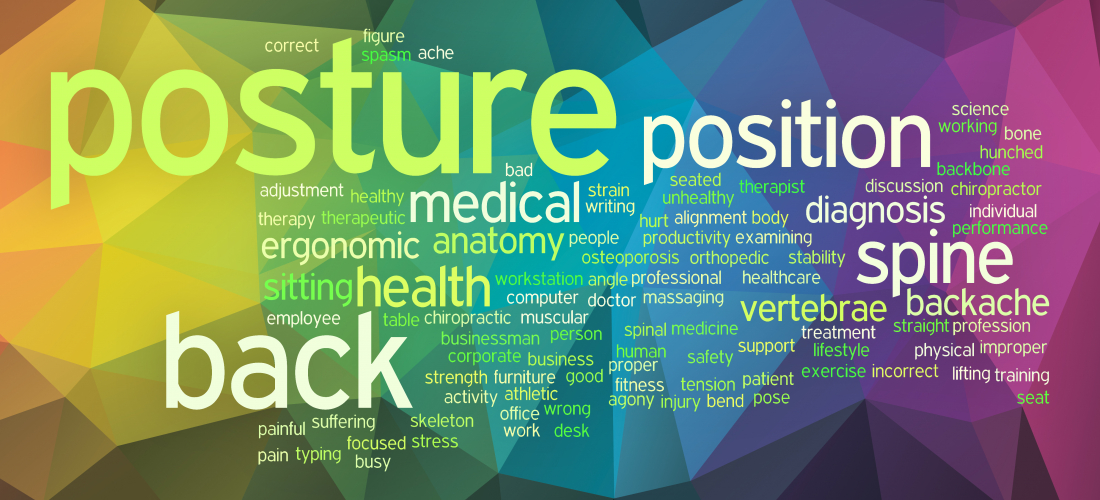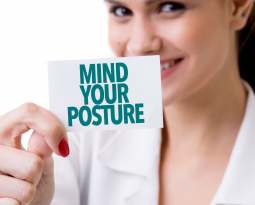
Postural Biomechanics for Better Health and Human Function
An aligned spine is associated with better health and human function. A body in alignment has the structural advantage to resist gravity with proper posture over time, to move with proper postural biomechanics, and to resist pathology associated with postural distortion patterns.
Your posture is the structural framework of your body, a component of health and wellness that is of fundamental importance throughout the lifecycle. Posture is impacted by environmental factors, such as occupations that promote standing posture versus seated posture. Whether seated or standing throughout the day proper postural biomechanics supports the development of Postural Fitness to prevent postural collapse.
According to McGill (2014) standing is better for the body than sitting is. There are many positive health effects with standing versus sitting such as caloric expenditure, better posture, and increased dynamic movement throughout the day. While seated the goal is to mimic standing posture as it reduces stress and strain to the lower back.
Occupations that require prolonged sitting should promote frequent postural adjustments. Regular changes in postural biomechanics are more advantageous than continued sedentary posture. To integrate postural changes take a posture break each hour for 30 seconds to reverse flexor dominant posture associated with postural collapse due to gravity. Sitting on an instable surface such as an exercise ball or posture cushion also promotes frequent changes in posture, which is advantageous for better spinal alignment.
Researchers sought to evaluate measurements of seated posture of the thoracolumbar junction and lumbar spine. After 10 minutes of sitting, on average the spinal angles demonstrated flexion of 24 degrees at the lumbar spine and 12 degrees at thoracolumbar regions relative to standing. This research is important because it demonstrates that people have a tendency of increased flexion with sitting in relation to standing (Claus et al., 2015).
With postural correction, the participants of the study demonstrated correct seated posture with a thoracolumbar angle of 2 degrees, which was similar to the thoracolumbar angle while standing of 1 degree (Claus et al., 2015). Postural correction is thus important for proper postural biomechanics while seated to emulate standing posture.
Another important consideration is how thoracic posture affects cervical alignment. While seated many people have a tendency to have flexor dominant posture with postural hyperkyphosis. This C-shaped spinal curvature is associated with a higher degree of forward head posture.
Quek et al. (2012) demonstrated that the presence of postural hyperkyphosis is related to decreased range of motion of the cervical spine, cervical postural distortion patterns, neck pain, and cervical impairments. For correction of postural alignment, the thoracic spine has an ‘upstream’ effect on the cervical spine and a ‘downstream’ effect on the lumbar spine.
Postural biomechanics is directly impacted by seated posture, especially in a society with a tendency toward working while seated instead of standing. An emphasis on proper postural biomechanics renders better health and functional output of the body.
References:
References:
Claus, A. P., Hides, J. A., Moseley, G. L., & Hodges, P. W. (2016). Thoracic and lumbar posture behaviour in sitting tasks and standing: Progressing the biomechanics from observations to measurements. Applied ergonomics, 53, 161-168.
McGill, S.M., 2014. Ultimate Back Fitness and Performance, fifth ed. Backfitpro Inc, Waterloo, Canada.
Quek, J., Pua, Y. H., Clark, R. A., & Bryant, A. L. (2013). Effects of thoracic kyphosis and forward head posture on cervical range of motion in older adults. Manual therapy, 18(1), 65-71.













